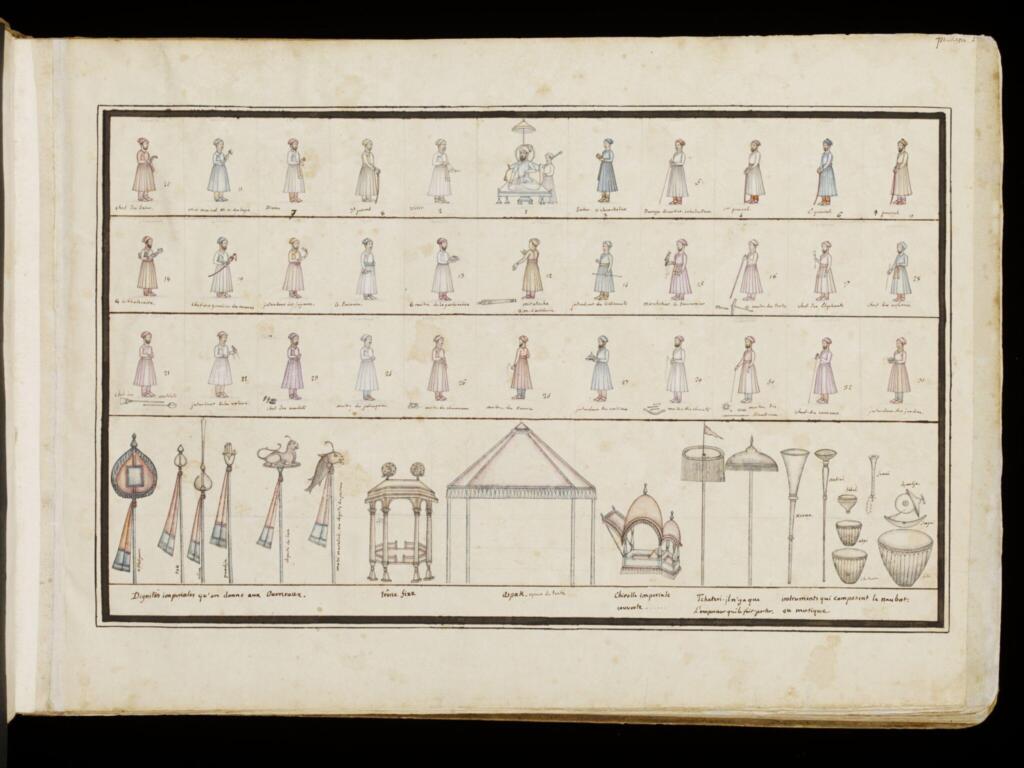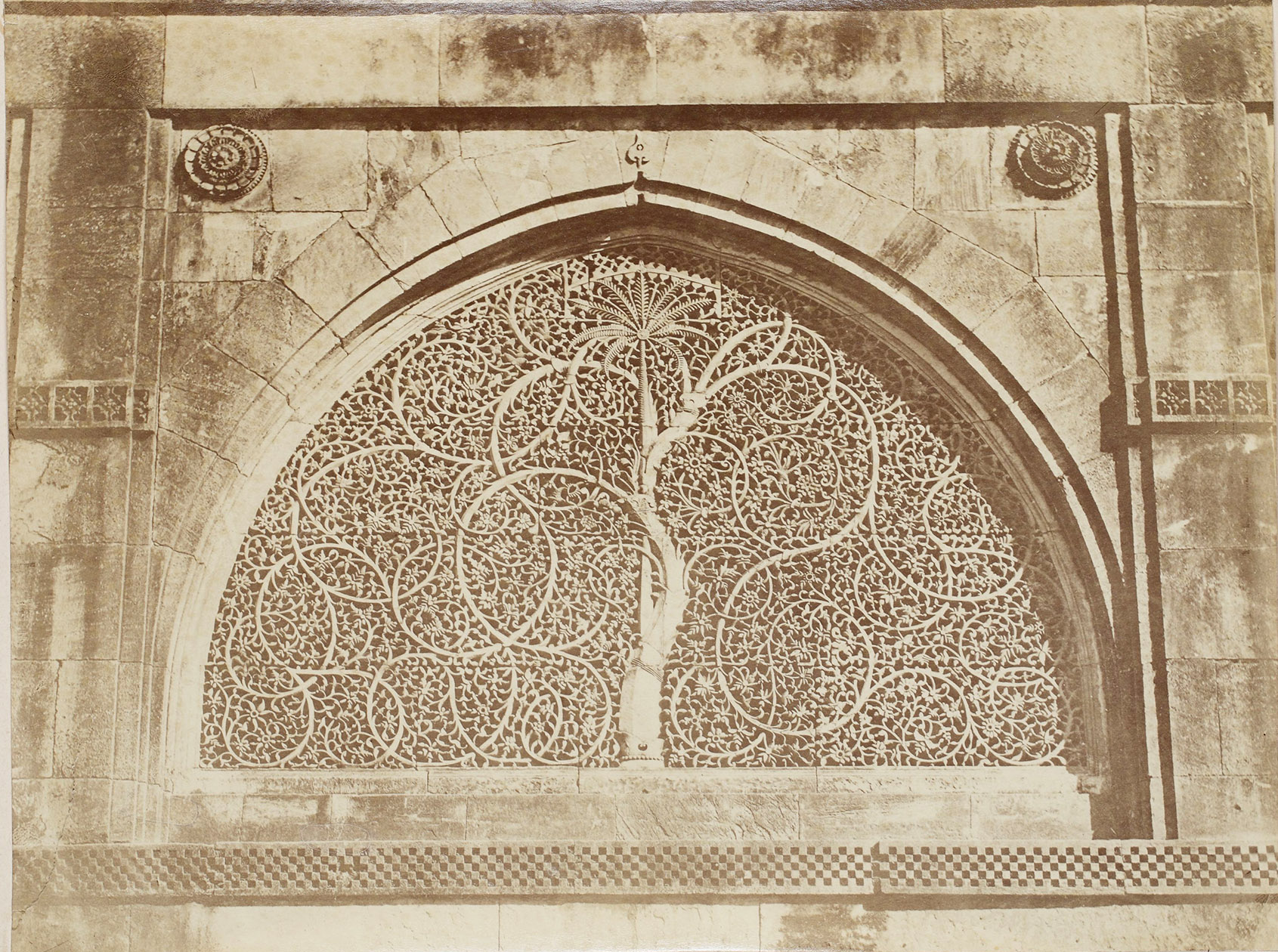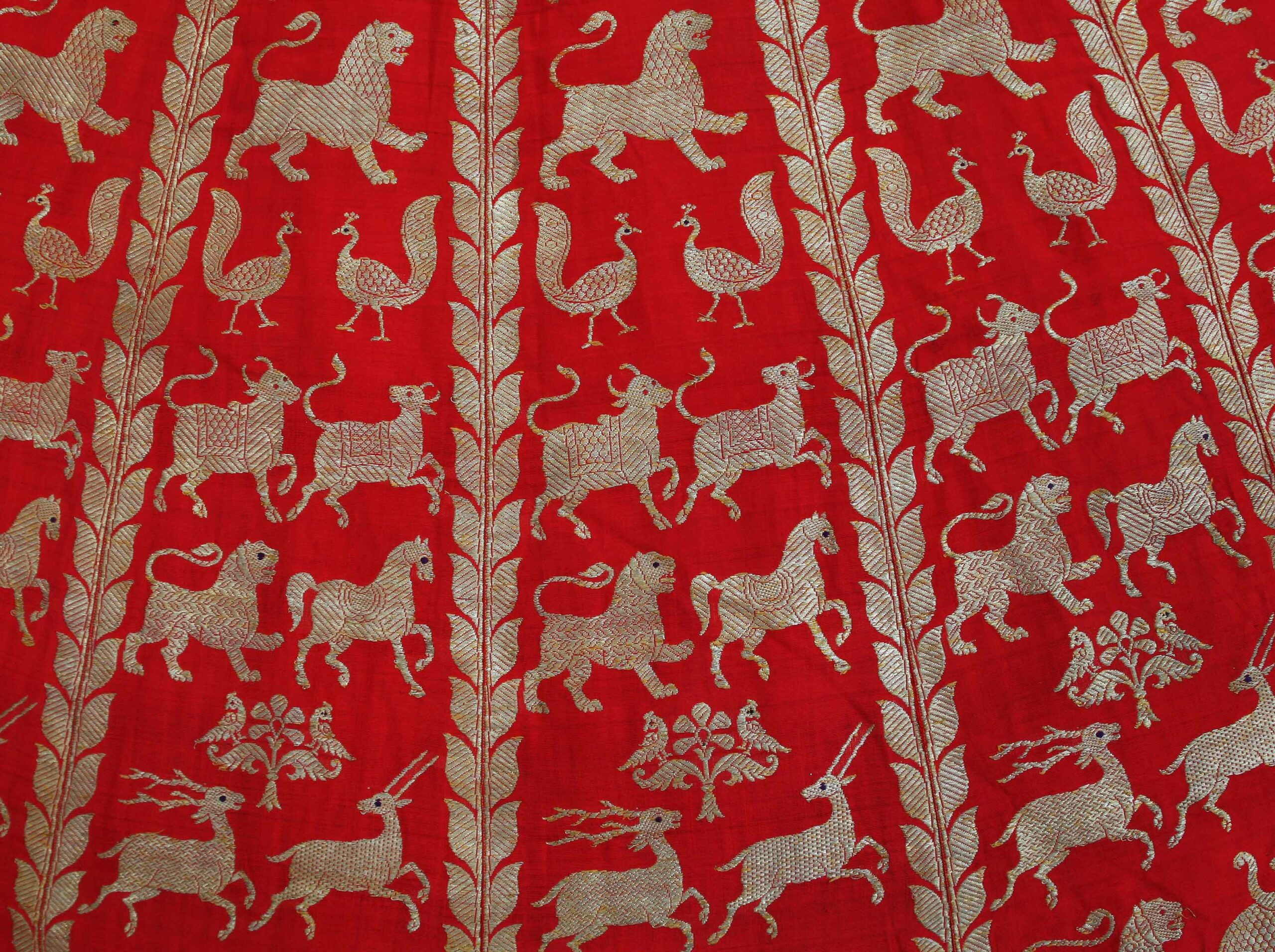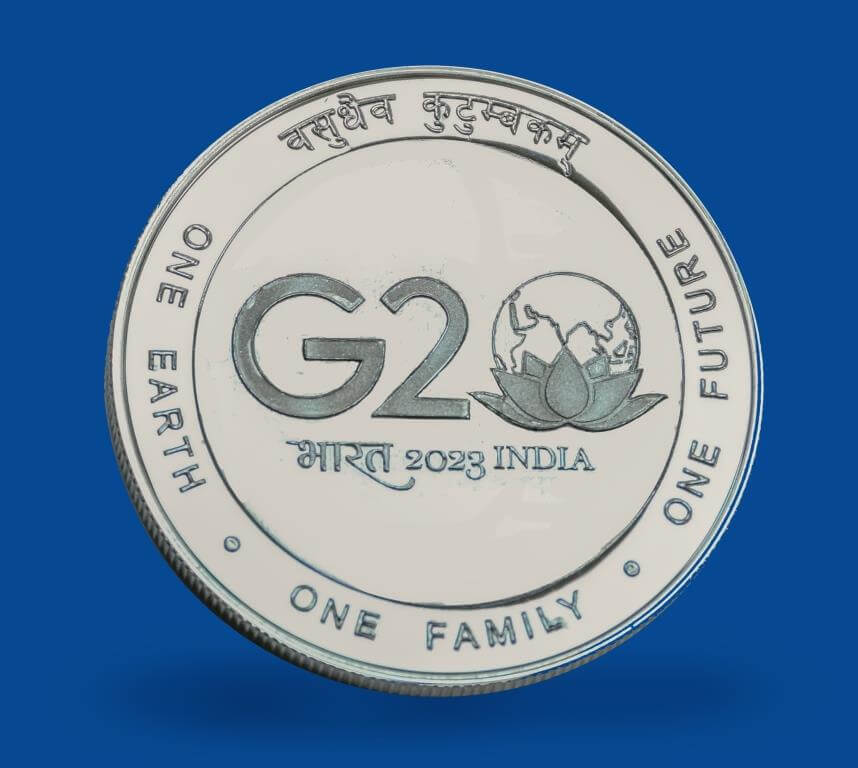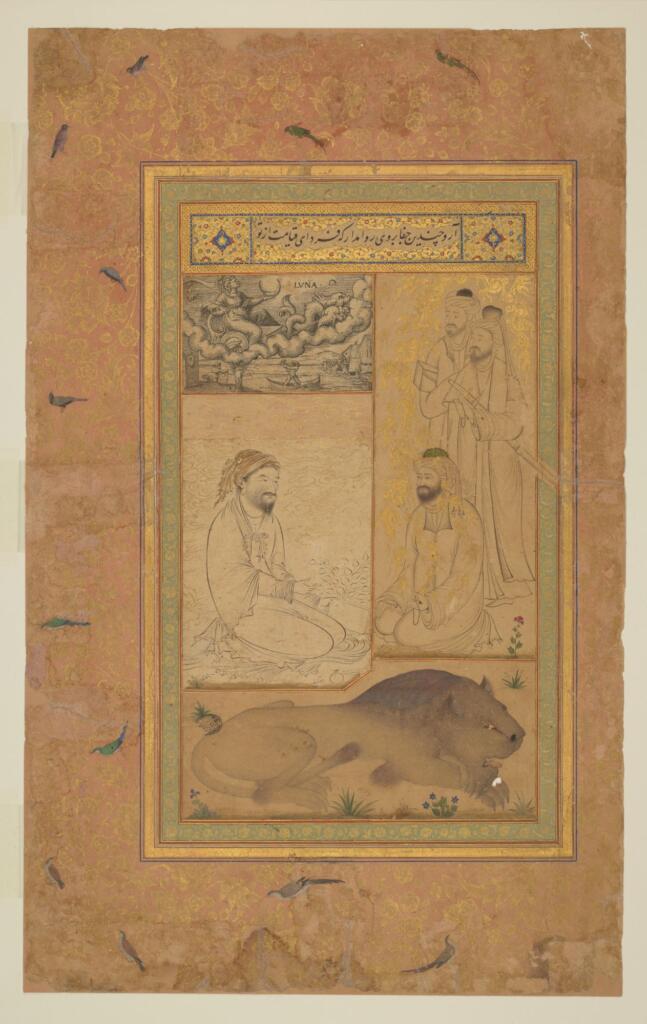
Fig.1: A composite page from the so-called Gulshan album. Collection: Chester Beatty Library, Dublin—click for source
If you follow Vinit Vyas on Instagram, you know that his love for visual arts of South Asia is infectious. He has a way of helping you step right inside the jewelled landscape of these treasures and appreciate the minutest details, whether he’s looking at Mewari miniatures, Jain manuscripts or Japanese erotic art from the 17th century. Vinit, who describes himself as a budding art-historian, has been a visiting and guest faculty at National Institute of Design, Ahmedabad. In this conversation with Sarmaya, he talks to us about an extraordinary Mughal tradition of portraiture and memory-making. It’s a treat to discover the sumptuousness and historical significance of the muraqqa’ through this passionate art-lover’s voice.
How would you describe a muraqqa’? What would be its closest contemporary in the 21st century?
I think the word that best describes a muraqqa’ is ‘album’. Although its origin remains debatable, one can trace the history of album-making from the Timurid court at Herat. Arguably the earliest album was assembled between 1427-1433 CE, for the Timurid prince Baysunghur (1397-1433 CE). Typically, muraqqa’s were larger than illustrated books and were confined to the courts; but their spread to other parts of Central Asia and South Asia (best-known under the Mughals), speaks volumes about their success and popularity. By the 17th century, Safavid and Mughal court culture developed a highly complex yet sophisticated system of compiling albums. A later example from 17th-century Mughal court which conveys the complexity of albums is this folio (Fig.1) from the so-called Gulshan album, compiled under the Mughal emperor Jahangir in 1599-1636 CE.
In the 21st century, one of the closest contemporaries of a muraqqa’ might be a scrapbook, but this comparison to an outstanding book genre would be an unfair one. Now my art historian brain is wondering how in my teenage years I’d cut out my favourite parts of Gujarati newspapers with news on discoveries of a Jain sculpture or information about an art event and paste them in my maths notebook! But thinking further, an interesting 20th-century (from the 1920s) parallel could be the gorgeous printed book Muraqqa-i-Chughtai with paintings of Abdur Rahman Chughtai (1894-1975 CE) and full text of Diwan-i-Ghalib.
See more here: The Heritage Lab. And here: Google Art & Culture
Was there a precursor to this form in the region?
As far as I know, I cannot think of any precursor to album-making in South Asia. The thematic diversity of the album pages and their juxtaposition gleaned from varied geography and time projects a conscious attempt at forming a ‘collection’. This phenomenon took a long leap from the earlier idea of ‘illustrated manuscripts’ that were produced across the Subcontinent and continued to be so in tandem.
What role do you think muraqqa’s played in portraiture in South Asia? What can you tell us about the art style? Which other art forms featured in these folios (like calligraphy)?
Perhaps I should begin with an oft-quoted line from A’in-i-Akbari, authored by Abu’l Fazal, “His majesty himself sat for his likeness, and also ordered to have the likenesses taken of all the grandees of the realm. An immense muraqqa’ was thus formed; those that have passed away have received a new life, and those who are still alive have immortality promised to them.”
Portraiture has a complex history in South Asia, but comparing the Mughal albums chronologically, one sees a shift in the taste of portraiture. When placed alongside other portraits inside an album, they served a very particular purpose. Abu’l Fazal’s statement attests to the fact that Akbar was trying to compile something beyond a ‘simple series of portraits’. These albums accommodate a variety of styles — from the conventional Persian to the Mughal naturalistic. From small-scale to large scale, sometimes within a cloud-like bubble, surrounded by floral decorations, with a wide variety of poetry (sometimes selected by the calligrapher!) or occasionally prose, these albums are a different world in their own right.
Similarly Mughal muraqqa’s were crucial sites of displaying different styles of calligraphy such as Naskh, Nastaliq or Shikaste that often vied with each other for their intrinsic aesthetic qualities. An exciting example is by the master calligrapher Mir Ali, who boasts about his skills, noting “No one other than the pen can put a finger on my words if I write, for instance, anything from a monumental inscription to the most minute script.”
Were there any prominent portraitists whose work featured in muraqqa’s? How, if at all, were artists credited for these works?
Oh yes, absolutely. To name a few, we find portraits painted by Dawlat, La’l Chand, Govardhan, Balchand, Manohar, Mansur, Payag, Kesu Das, Abu’l-Hasan and Bichitr. Inscriptions like “The work of Bichitr, the slave of the court”, “A likeness of…”, “the servant of the court…”, “the work of poor Dawlat”, “the work of master Abd al-Karim, the Rarity of the Age” so on invite us to think of the tone of inscriptions. Of course, the names confirm their identity but referring to the self as “servant” or “poor” or “slave” or “master” or “Rarity of the Age” project how they saw themselves in the framework of the Mughal courtly culture.
Would you say the portraits in muraqqa’s were faithful to reality? Or were they highly embellished to flatter the patron? How much control did the artist have?
What ‘reality’ meant for Mughal emperors or generally in an early modern Persianate world is very different from how we perceive it today. The ever-expanding scholarship on Mughal painting, especially portraiture, gives us many answers. Contrary to popular belief, portraiture was already a part of Islamic visual language even before the arrival of the Europeans. Indeed, the diplomatic gifts of European prints and their techniques did serve them well, but that is only one part of this huge Mughal platter. The use of verisimilitude, chiaroscuro, perspective and focus on expressions and volume varies in different portraits. For example, when one observes Jahangir in albums, we see how he ages — his relatively thin body with sharp chin and black hair changes into a protruding belly with double chin, grey hair and wrinkles.
Which, according to you, are the most striking portraits found in Mughal muraqqa’s?
There are many, but the two examples below offer a glimpse of how portraiture was used. The first one (Fig.2) is a folio from the Minto album (c. 1630-1640 CE) showing emperor Shah Jahan standing on the globe with his sons. He occupies the central position, flanked by his sons who stand on the ground. Note that none of the inscriptions name the sons but shower praise only on Shah Jahan. Everyone is heavily bejewelled and elegantly dressed, but Shah Jahan’s confident gaze, posture, turban, the neatly tucked dagger and the sword in one hand distinctly emphasize his power and status. The putties in the top centre are flying down to honor him with a crown. Dara Shikoh, Shah Jahan’s favourite son, offers him a tray of jewels — again, Shah Jahan’s preference for his favourite son, standing next to him, is clear. Power, status and the politics of portrayal are accentuated perfectly in this painting.
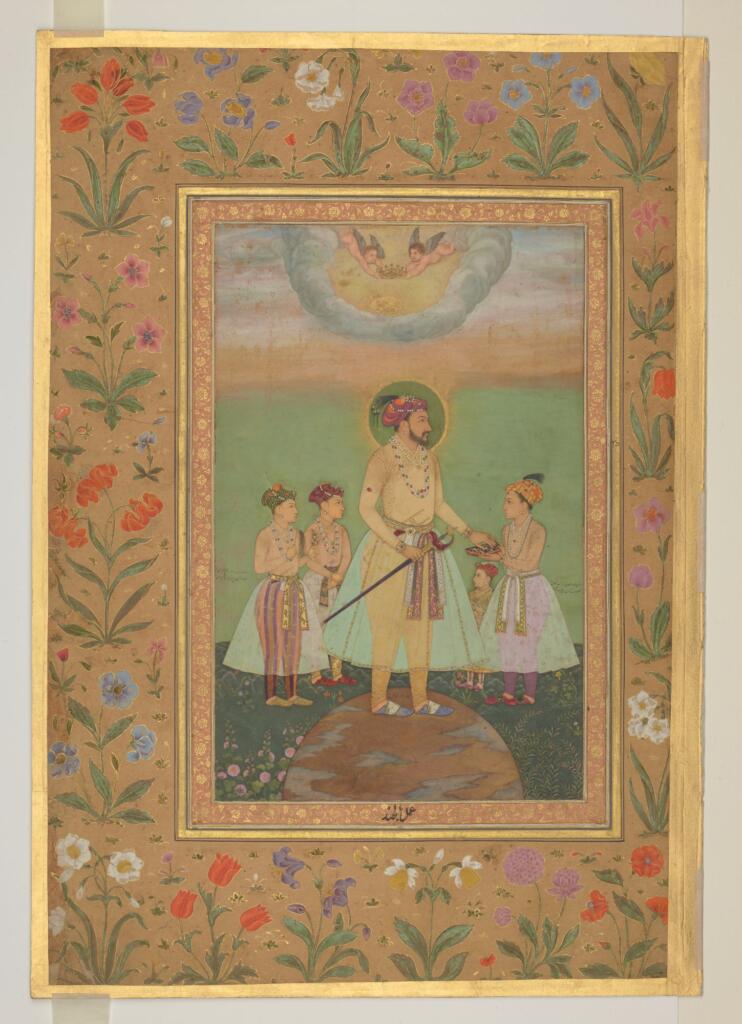
Fig.2: Shah Jahan standing with his sons, signed by Balchand, folio from the Minto album. Collection: Chester Beatty Library, Dublin—click for source
The second example (Fig.3) is from the same album, and it portrays Akbar (Shah Jahan’s grandfather), handing him an exquisite crown while Jahangir (Shah Jahan’s father) gazes curiously. Shah Jahan taking the crown directly from Akbar clearly highlights the brief period of tension between him and his father Jahangir.
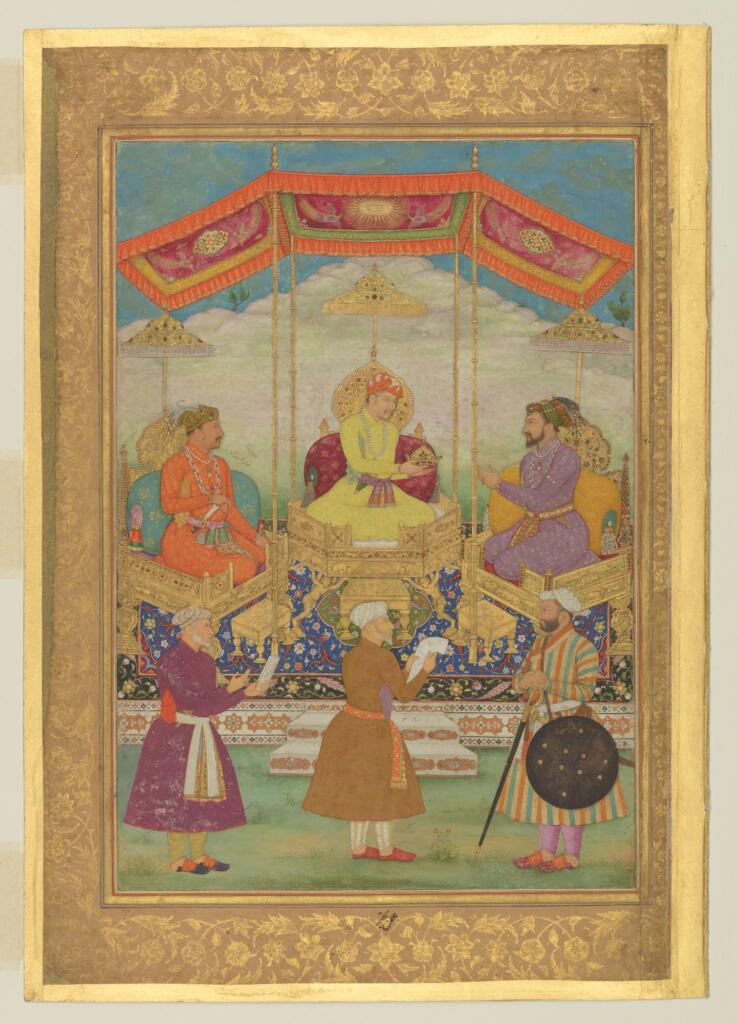
Fig.3: Mughal emperors Akbar, Jahangir and Shah Jahan with their ministers by Bichitr, folio from the Minto album. Collection: Chester Beatty Library, Dublin—click for source
How did muraqqa’s change in the way that earlier Mughal rulers like Timur, Babur and Humayun were depicted to Jahangir and Aurangzeb? Could you talk about this shift in perception? Did they want to create a sense of grandeur?
Some paintings (c. 1555-1560 CE) in the Fitzwilliam album, possibly produced under Mughal emperor Humayun, are some of the earliest examples from South Asia, but the art of album-making blossomed under Jahangir and Shah Jahan. We must look at the development of portraiture alongside their inclusion in albums simultaneously. Compared to their Timurid counterparts, albums produced under Jahangir and Shah Jahan become more grand, with lavish use of gold, exquisitely painted jewellery, ‘realistic’ portraits which almost invite the viewer to look at them more carefully. Thematically, some scenes like the dynastic portraits remained identical; on the other hand, the inclusion of Jahangir’s so-called allegorical portraits in the albums reveal his personal engagement in the making of albums. Besides, the act of compiling an album also makes us contemplate the ‘history’ of collecting.
Are there any particular folios that stand out to you? What are the details that make them more significant?
A folio from the so-called Gulshan album (see Fig.1) has a 16th-century European print and three Persian drawings, extant in the Chester Beatty Library collection. To our excitement, the engraving of Roman goddess Luna (top left) is by the German printmaker Virgil Solis while the kneeling figure (who is a scribe) below is executed by Reza ‘Abbasi of Isfahan. The three standing figures are made by an unknown Safavid artist while the lion’s rendering echoes the work of master Persian artist Bihzad. Each composition is neatly and deliberately separated in rectangular panels. As Mika Natif has succinctly noted, this mixture of images reveals the “breadth of collecting at the Mughal court”.
Another example is this sensitively rendered portrait of a Jesuit priest (Fig.4), from the Salim album. Prince Salim’s rebellion against his father Akbar made him briefly shift to his own court in Allahabad. This album was probably assembled for prince Salim (future Jahangir) during this time i.e. 1600-1604 CE. As the Chester Beatty library collection aptly notes, this album contains more “contemporary court portraits, small compositions adapted from European print media, or studies of spiritual figures”.
And finally, this sensitively painted scene from the Late-Shah Jahan album (c. 1650-1658 CE) is probably the only known folio from this album which is in a horizontal format. Scholars have noted that this painting was much smaller—the horses, the mulla in brown robe and the three figures on the far right were all added later. The curious gazes, expressions, different attires, postures and the inclusion of a yogi make this scene more enchanting. Besides, the figures and birds in a beaded rope device of the border also seem to ‘join’ this musical evening.
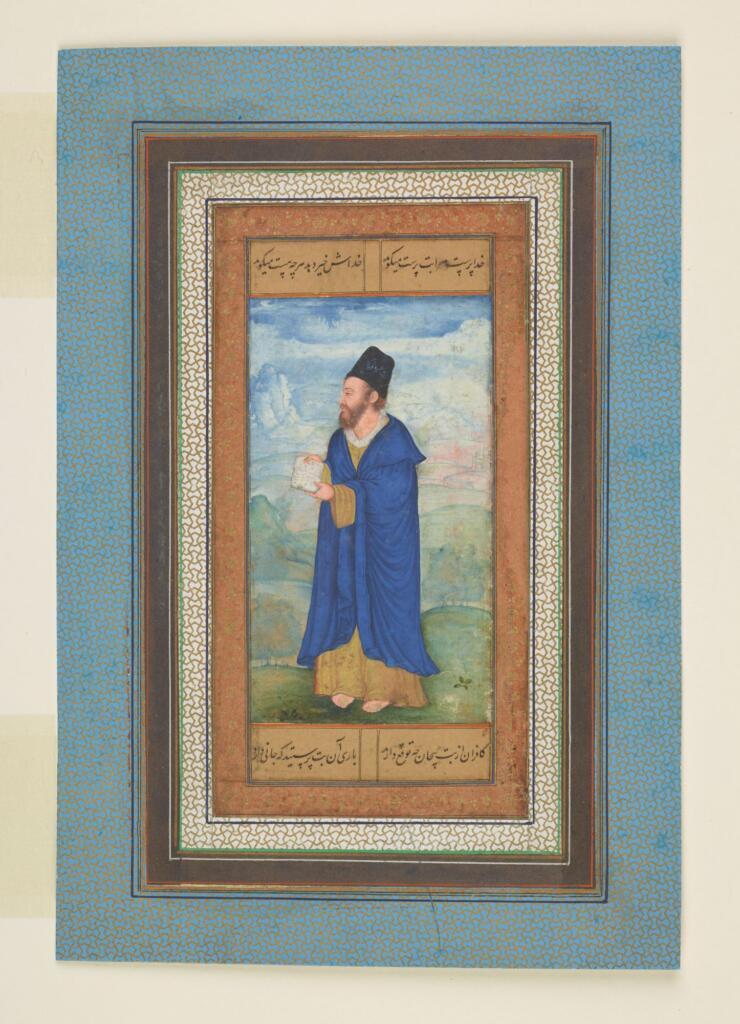
Fig.4: Portrait of a Jesuit priest; attributed to Kesu Das. Collection: Chester Beatty Library, Dublin—click for source
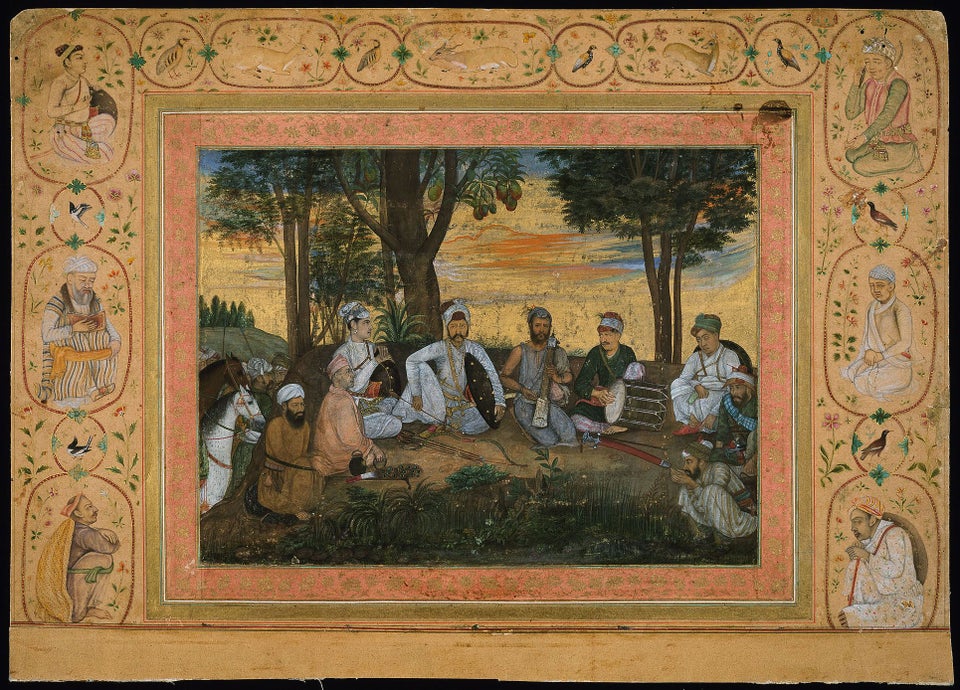
Fig.5: Soldiers listening to music beneath a mango tree, from the collection of Chester Beatty Library, Dublin. Attributed to Payag. Image source: Reddit—click for source
What direction did muraqqa’s take in 18th– and 19th-century India?
Although we’ve primarily talked about Imperial Mughal muraqqa’s, a number of other albums have come to light — the Lady Coote album from Awadh and Fadnavis album. With the weakening of Imperial Mughals, the concept of the muraqqa’ was liberated from being a prerogative of the imperial court and adopted by both regional powers and European officials in India.
Moving beyond the strictest definition of albums is an intriguing example from Faizabad. Jean Baptiste-Gentil was an officer of the French East-India Company, who also served as a special advisor to the minister of Awadh. He is known to have collaborated with at least two Indian painters named Mohan Singh and Nevasi Lal in making what is now referred to as the Gentil Album. Extant in the collection of Victoria & Albert Museum, recent scholarship has noted that he used the famed Mughal encyclopaedic text Ain-e-Akbari as a framework. From Tibetan thangka compositions, Hindu deities and rituals to sports, court culture and beyond, the folios (medium: watercolour on paper) in this album are crucial in our understanding of 18th-century albums and the history of collecting.
This folio (Fig.6) depicts a Mughal emperor and his court, but the arrangement is very diagrammatic. Another important example (Fig.7) from the same album portrays the zenana of emperor Muhammad Shah. The entire scene is filled with details — women are seen dancing, playing music, splashing water and riding a royal barge while the architectural backdrop and distinctly rendered red tent sharply separate them from the distant background. This is a ‘women only’ party, if I may! Most importantly, we see Muhammad Shah’s mother riding a white bull as attendants follow and entertain her!
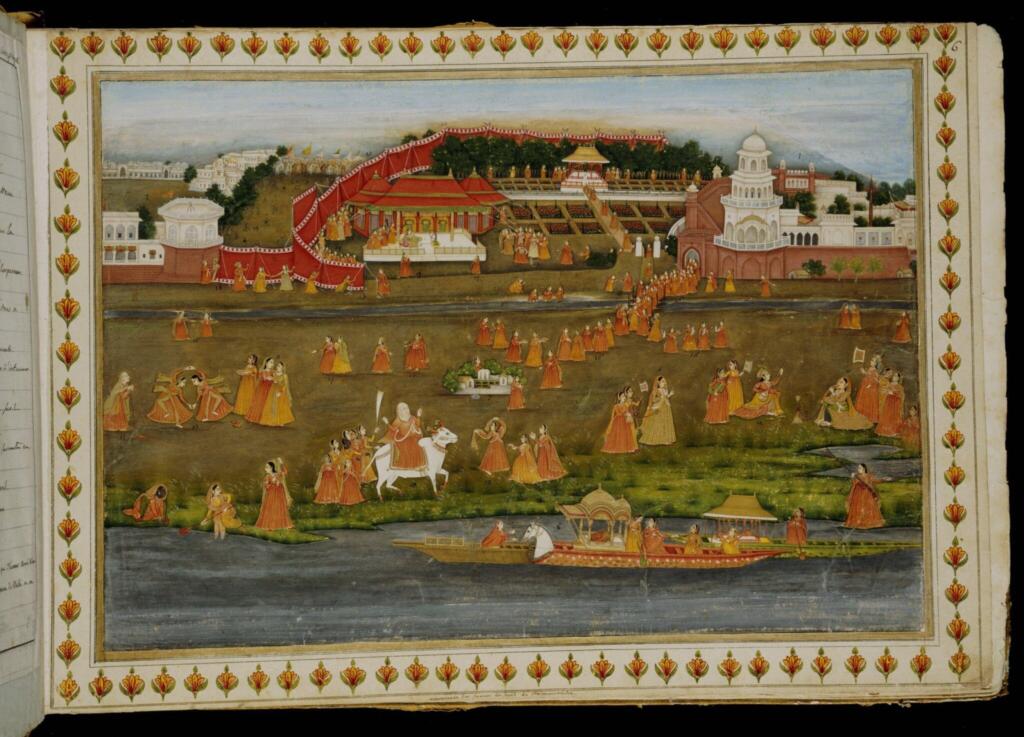
Fig. 7: The Mughal Emperor and his Court, c. 1774, Faizabad. Collection: V&A Museum—click for source
Acknowledgments:
My profound thanks to Indranil Banerjee, whose research, encouragement and musings on Islamic art has been a source of inspiration.
About the author
Currently pursuing his MA in Art History from MSU Baroda, Vinit Vyas works on visual and material culture of South Asia, particularly court and devotional painting traditions. His interdisciplinary research also focuses on sex-sexuality, history of emotions, religious studies, and languages. Apart from being a guest and visiting faculty at NID, Ahmedabad, most recently he was a research associate at the Museum of Art & Photography, Bangalore, and is co-authoring a catalogue on Rajasthani paintings.

